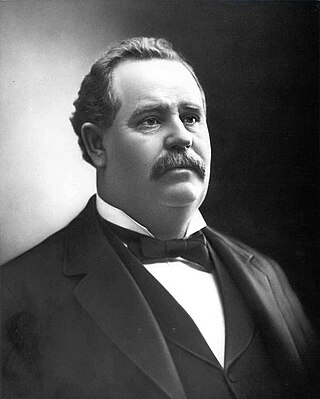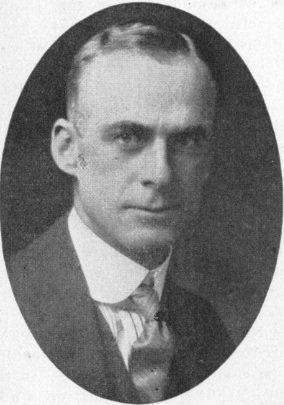Related Research Articles

The Homestead Acts were several laws in the United States by which an applicant could acquire ownership of government land or the public domain, typically called a homestead. In all, more than 160 million acres of public land, or nearly 10 percent of the total area of the United States, was given away free to 1.6 million homesteaders; most of the homesteads were west of the Mississippi River. These acts were the first sovereign decisions of post-war North–South capitalist cooperation in the United States.

Hugh Winder Nibley was an American scholar and member of the Church of Jesus Christ of Latter-day Saints who was a professor at Brigham Young University (BYU) for nearly 50 years. He was a prolific author, and wrote apologetic works supporting the archaeological, linguistic, and historical claims of Joseph Smith. He was a member of the LDS Church, and wrote and lectured on LDS scripture and doctrinal topics, publishing many articles in the LDS Church magazines.

Marriner Stoddard Eccles was an American economist and banker who served as the 7th chairman of the Federal Reserve from 1934 to 1948. After his term as chairman, Eccles continued to serve as a member of the Federal Reserve Board of Governors until 1951.

David Eccles Sr was an American businessman and industrialist who founded many businesses throughout the western United States and became Utah's first multimillionaire.

Charles Wilson Nibley was a Scottish-American religious leader, businessman, and politician. Nibley was a member of The Church of Jesus Christ of Latter-day Saints and served as the fifth presiding bishop of the Church of Jesus Christ of Latter-day Saints between 1907 and 1925 and a member of the church's First Presidency from 1925 until his death. He was also a businessman and was involved in various industries, such as lumber, sugar, and railroads.

Thomas Duncombe Dee was an American businessman from Utah.

Whitney is an unincorporated community, also considered a ghost town, in Baker County, Oregon, United States, on Oregon Route 7 southwest of Sumpter. It is on the North Fork Burnt River, near the Blue Mountains and Wallowa-Whitman National Forest.
The Amalgamated Sugar Company is an American sugar beet-refining company run on a cooperative basis. It was founded in 1897 in Ogden, Utah, and is now located in Boise, Idaho. The company markets its sugar under the White Satin brand.

Spencer Fox Eccles is a prominent financier and philanthropist in Salt Lake City, Utah and chairman emeritus of the Intermountain Region of Wells Fargo Corporation. From 1982 to 2000, he was chairman and chief executive officer of First Security Corporation of Salt Lake City, which was, until its sale to Wells Fargo in 2000, the largest banking organization in the Mountain West measured by assets, deposits and market capitalization.

The Oregon land fraud scandal of the early 20th century involved U.S. government land grants in the U.S. state of Oregon being illegally obtained with the assistance of public officials. Most of Oregon's U.S. congressional delegation received indictments in the case: U.S. Senator John H. Mitchell and U.S. Representatives John N. Williamson and Binger Hermann, with Senator Charles William Fulton singularly uninvolved.
Nibley may refer to:
The Grande Ronde Valley is a valley in Union County in northeastern Oregon, United States. It is surrounded by the Blue Mountains and Wallowa Mountains, and is drained by the Grande Ronde River. La Grande is its largest community. The valley is 35 miles (56 km) long, north to south, from Pumpkin Ridge to Pyles Canyon, and 15 miles (24 km) wide, east to west, from Cove to the Grande Ronde River's canyon. Its name, fittingly, means, "great circle."

Preston Nibley was an American religious leader in the Church of Jesus Christ of Latter-day Saints, and wrote several books on the church, including several pieces of devotional literature.

The Church of Jesus Christ of Latter-day Saints in Oregon refers to the Church of Jesus Christ of Latter-day Saints and its members in Oregon. Oregon has the 9th most members of the church of any U.S. state. Members have had considerable influence in the state throughout its contemporary history and many influential Latter-day Saints have come from Oregon, including Senator Gordon H. Smith.

Wilkesboro is an unincorporated community in Washington County, Oregon, United States. It is located on Oregon Route 6, one mile east of Banks.
Nibley is an unincorporated historic community in Union County, Oregon, United States, about 11 miles east of La Grande on Oregon Route 237 in the Grande Ronde Valley.
The Utah-Idaho Sugar Company was a large sugar beet processing company based in Utah. It was owned and controlled by the Church of Jesus Christ of Latter-day Saints and its leaders. It was notable for developing a valuable cash crop and processing facilities that was important to the economy of Utah and surrounding states. It was part of the Sugar Trust, and subject to antitrust investigations by the U.S. Department of Justice, the Federal Trade Commission, and the Hardwick Committee.
The Oregon Sugar Company was a sugar beet growing and processing operation created by the founders of the Amalgamated Sugar Company of Utah.
Mormonism has had a long history in the Pacific Northwest of the United States. Mormons have had a large influence on the region's development, as they settled throughout the states of Idaho, Oregon, and Washington, and took part in the construction of the region's early infrastructure, as well as worked in the lumber mills and mines across these states. Today, despite a period of discrimination based on their religious affiliation, the region boasts a relatively large population of members of the Church of Jesus Christ of Latter-day Saints compared to other parts of the United States outside of Utah.
References
- ↑ Leonard J. Arrington. "David Eccles". Utah History Encyclopedia.
- 1 2 Kamholz, E. J., Blain, J., Kamholz, G., & Ebrary, Inc. (2003). The Oregon-American Lumber Company: Ain't no more. Stanford, Calif: Stanford University Press.
- 1 2 Nibley, Hugh. Approaching Zion (The Collected Works of Hugh Nibley, Vol 9), p. 469.
- ↑ Godfrey, Matthew C. (2007). Religion, politics, and sugar : the Mormon Church, the federal government, and the Utah-Idaho Sugar Company, 1907-1921. Lehi, Utah: Utah State University Press. pp. 188–190. ISBN 0-87421-658-3. OCLC 74988178